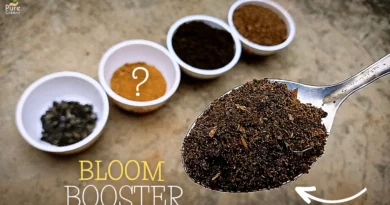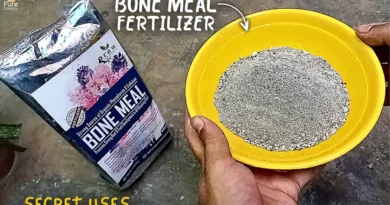SECRET BENEFITS Of VermiCompost For Plants! (& Correct Way To Use)

Vermicompost is a very useful fertilizer — it’s much more powerful than ordinary compost. In this Post, we will see how you can use vermicompost for your plants, how it’s made, what its benefits are, and much more. So, let’s begin.
What is Vermicompost?
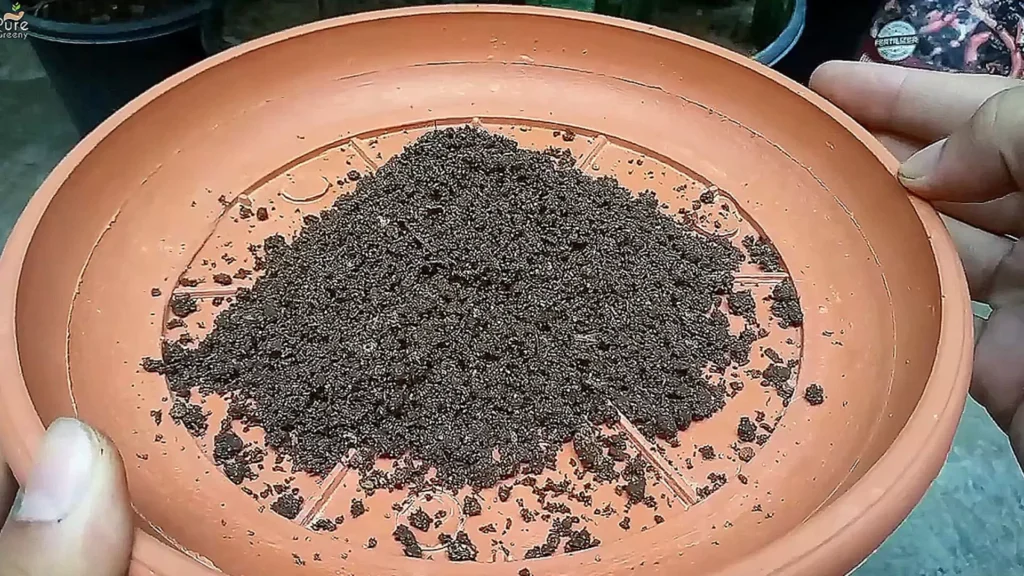
Vermicompost looks just like ordinary kitchen waste compost. It’s porous, lightweight, and has an earthy smell. It’s made by earthworms that decompose organic matter and turn it into a nutrient-rich material called vermicompost.
Quality-wise, vermicompost is rich in nutrients with a slightly acidic pH, and it’s absorbed by the roots very effectively.
If we look around for the best fertilizers, it’s hard to find an all-in-one organic food for plants.
One fertilizer might be rich in nitrogen but lack potassium, while another may contain potassium and phosphorus but not enough nitrogen.
So, if I had to recommend only one fertilizer that you can use for all your plants at every stage of growth, it would be vermicompost. It has a balanced form of all nutrients in an organic form.
How To Make Vermicompost At Home?

Making vermicompost at home is also very easy. All you need are a few earthworms and some organic matter.
This organic matter could be vegetable peels, leaves, paper, fruit peels, etc.

Just like regular compost, vermicompost is made layer by layer — add organic matter, then some soil or compost, and then add the earthworms. Keep layering in the same way until the composting bin is full.
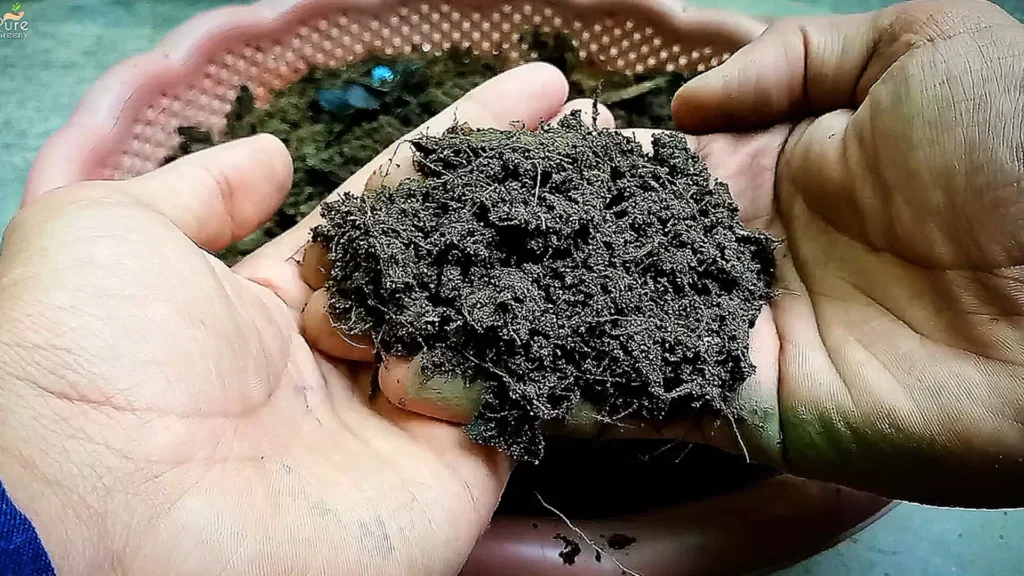
The earthworms will eat the material and turn it into a fine compost form. When it becomes fully black and porous without any lumps of organic matter, you can use it on your plants.
What Are the Benefits of Vermicompost?
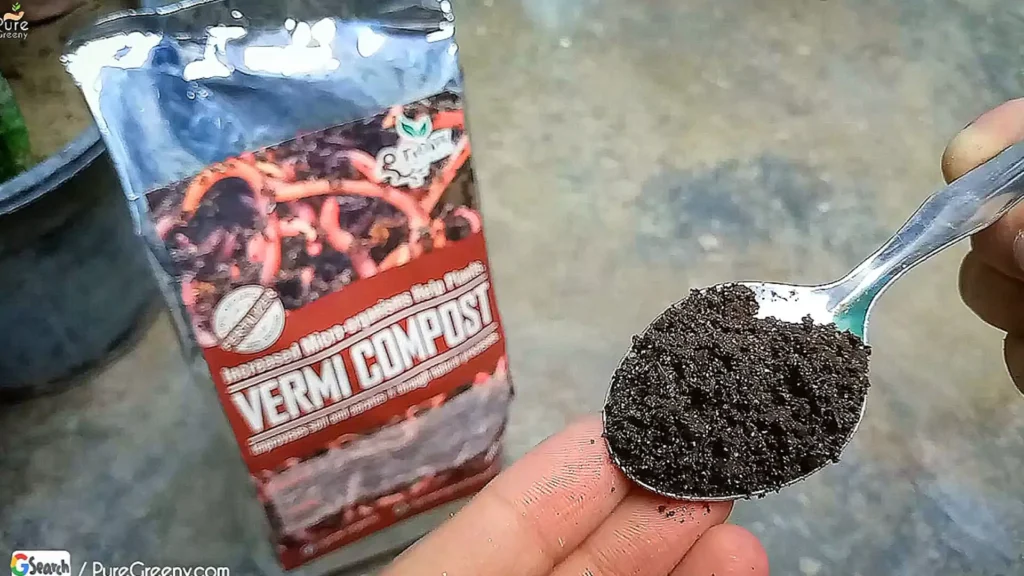
There are also a lot of benefits of using vermicompost for plants.
- First of all, it’s a nutrient-rich material full of essential elements required by plants. This provides the plant a consistent supply of nutrition, and in such a mixture, the plant thrives.
- The special thing is that it doesn’t matter what stage the plant is in. If the plant is young and growing leaves, the use of vermicompost will make it bushier.
- If the season is ideal for flowering, vermicompost helps the plant produce more and more flowers. If you are using it on a vegetable plant, the fruit will grow bigger and more flavorful.
- Vermicompost is also high in carbon, which is an essential element for microbial life. The helpful microbes in the soil use carbon to maintain a healthy soil ecosystem. As a result, the plant grows well and the soil becomes more fertile over time. The use of vermicompost makes the soil soft, porous, and fertile.
- Plant stresses like drought, heat, overwatering, or lack of sunlight will all be handled by the plant more effectively due to the use of vermicompost.
So overall, vermicompost is the most ideal fertilizer for any plant, and you must give it a try.
What are the Effective Ways to Use Vermicompost Fertilizer?
Now, let’s learn what are the most effective ways to use vermicompost for plants.

The first and simplest way to use vermicompost on a plant is to apply it directly to the soil of a potted plant. When you see the season is ideal for plant growth, let the upper layer of soil dry out a bit, and then add a handful of vermicompost to a 10-inch pot. Mix really well and water thoroughly.
You can do this at least once a month — just don’t do it in the off-season of the plant. The fertilizer will be absorbed by the roots within days because vermicompost is slightly acidic, which is ideal for absorption.

Another simple way to use vermicompost is while preparing a potting mix. When you are making potting soil for vegetable plants, rooting plants, or indoor plants, you can simply add one part vermicompost to three or four parts soil.
This will enhance the overall properties of your soil media and give you excellent results. Just make sure you are using good-quality vermicompost — one is also added Here.

Another way to use vermicompost for plants is for seeds. Sprouting seedlings require a variety of nutrients, and adding just a small amount of vermicompost in the seed starter will provide the seedlings with all the nutrients they need.
For making a cheap seed starter at home, you can follow this Guide and add about 20% vermicompost to your seed mix.

You can also make compost tea out of vermicompost, which is very beneficial for plants. It’s made the same way as ordinary compost tea — you can learn how to make it at home from This Guide.
Can We Use It on All Plants?
Following the correct way, you can use vermicompost on almost all kinds of plants at every stage of growth.
Whether it’s a vegetable plant, a houseplant, a small seedling, or a seasonal flowering plant — vermicompost simply works for all.
What Side Effects Does It Have?

If you follow the proper way to use vermicompost, it’s very fruitful. But if you don’t, it can also harm your plants.
- First of all, too much use of vermicompost increases the water-holding capacity of the soil, which itself is not harmful.
But if you are a beginner and you overwater once, this can cause many problems like curling leaves, yellow leaves, root rot, and stem rot. So, be very careful. - Use of poor-quality vermicompost can also harm your plants because it may contain contaminants.
These contaminants can make your soil salty or limit the growth of the plant.
Always buy from an authentic source — one is also added Here.
That’s all about vermicompost and its benefits for plants. Here is a detailed Guide on rose plant growing tips if you’d like to follow.


